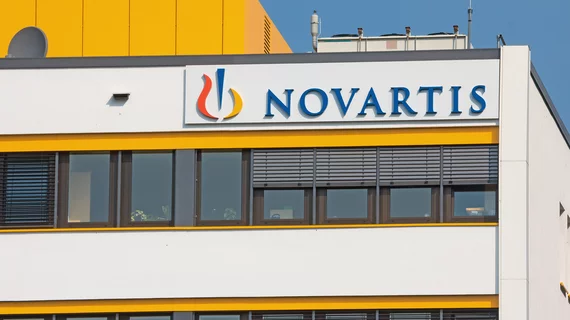Novartis breaks ground on 2 new facilities aimed at increasing radiopharma production
Swiss drugmaker Novartis on Wednesday announced plans to construct two new manufacturing facilities aimed at bolstering its radiopharmaceutical pipeline.
The company recently broke ground on an Indianapolis site, which will produce radioisotopes needed for radioligand therapies. Meanwhile, Novartis also is working to establish its third U.S. manufacturing facility in Carlsbad, California.
With the new construction, leaders hope to “create resiliency” in its network and optimize the delivery of medicines on the West Coast. The news comes after radiologists last year complained of critical shortages of Novartis’ Pluvicto, a treatment for metastatic prostate cancer.
"Novartis pioneered the adoption at scale of radioligand therapies across different indications as a targeted approach to treat cancers," Victor Bultó, MBA, U.S. president of Novartis, said in a Sept. 4 announcement. "Building on this experience and knowledge, we are confident in the potential of [radioligand therapies] to meaningfully benefit many more patients affected by different types of cancer in the future. We are investing in our supply chain capabilities today to ensure that we are prepared to consistently deliver these complex treatments to the growing number of eligible patients in the long-term."
Radioligand therapies are a form of precision medicine combining a tumor-targeting molecule with a therapeutic radioisotope. This allows for the delivery of radiation to the tumor while limiting damage to surrounding tissue, Novartis noted. The company continues to investigate other applications for these drugs across different cancer types and care settings. Both new manufacturing sites will include room for further expansion to produce additional isotopes and therapies.
Previously launched products have included Pluvicto (lutetium Lu 177 vipivotide tetraxetan) and Lutathera (lutetium Lu 177 dotatate). Novartis believes it boasts “one of the deepest and most advanced pipelines in the industry,” with several drug programs now “in or entering the clinic.” Once it gains the necessary regulatory approvals, isotopes produced in Indianapolis will be used in the manufacturing of Pluvicto, Lutathera, and other investigational RLTs in Novartis' pipeline.
In May, Novartis announced plans to acquire radiopharmaceutical firm Mariana Oncology for up to $1.75 billion. Siemens Healthineers also recently inked a deal to acquire Novartis’ imaging unit for over $223 million, the Financial Times reported.

